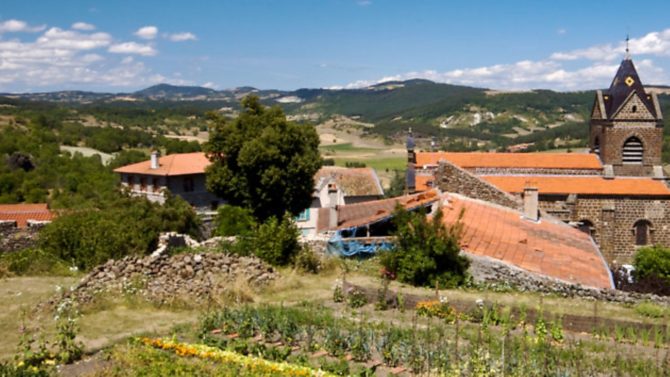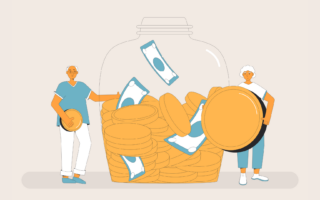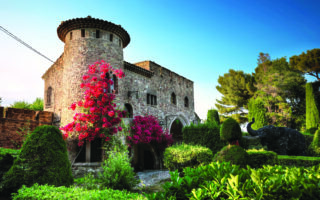Self-sufficiency in France

Self-sufficiency is not just a French fancy. This month, Jessica Carter finds out how you could begin to take steps towards a more sustainable life across the Channel
TAKE A SELFIE
Self-sufficiency, far from being an outlandish idea reserved for bohemians and eco-warriors, is something that more and more of us are beginning to prioritise. This may perhaps be the result of a desire for a quieter life, the more noticeable effects of climate change or a wish to save money and minimise wastage.
But our motivations perhaps go even deeper than we think – self-sufficiency could actually be an instinctive human desire. Some psychologists believe in a hierarchy of human needs, and think that this explains our aspirations and motivations.
According to this theory, our most basic needs are our physiological ones, such as food, drink, shelter and warmth, the needs which must be met in order for us to survive.
Our next priority is our need for safety, followed by our social needs and then our esteem needs – which is where independence and achievement take precedence. Finally, at the top of the pyramid is our need for self-actualisation, which involves realising our personal potential. Once one set of needs is met, the next starts to dominate, and so we move through those five stages.
The reason for the impromptu psychology lesson is that it shows just how satisfying self-sufficiency can be. It plays a part in each set of needs – most notably in our physiological needs for food, water and warmth, and the esteem-related needs of independence. It also resonates with the self-actualisation needs to fulfil our personal potential; what could be more fulfilling that independently providing your family with what they require?
So, if self-sufficiency didn’t play much of a part in your list of dream home attributes before, perhaps it should. Especially if your dream home happens to be – as we would hazard a guess that it is – located on the other side of the Channel.
France is up there with the most self-sufficient countries in the world. In fact, it is the only one that can claim to be entirely agriculturally self-sufficient in the whole of the EU. France’s eco success is down to a few factors, among which are its abundance of agricultural land – France has more areas of forest than any other country in western Europe – and its wind energy potential, which perhaps comes courtesy of its 5,500km of coastline. It’s the perfect place to go green.
Although self-sufficiency is a great idea in principle, it admittedly sounds a little idealistic. However, there are a number of different ways you can introduce self-sufficiency into your home, and not all of them involve huge commitments.
Let’s revisit those basic human needs: food, water and warmth. All of these can be self-generated in a sustainable way and are perfect places to start in your quest for self-sufficiency.
FOOD
How better to make the most of your new French property’s garden than use it to grow your own food? French climates do differ wildly, but no matter where your dream home is, the chances are it has the potential to become extremely fruitful. Literally.
The sunniest spots in your garden make for prime vegetable patches and promise sweeter onions, tomatoes and carrots. Shady spots, meanwhile, are great for the likes of strawberries and salads. If your garden is short of shade, a bit of netting is all it takes to keep the sun from scorching your shoots.
When preparing your plot, make sure it is completely weed-free in order to give your precious crops the best possible start in life. If you’re trying to steer clear of chemicals and plan to avoid using weed killer, then be extra vigilant and make sure you get all those roots up as well. It’s a good idea to take note of how deep your soil is at this point too; if your earth is shallower than your spade’s blade you’ll need to either grow your food in large troughs or pots, or build raised beds.
When it comes to planting, take heed of the seed packets’ instructions. Planting too early in the year will scupper any plans you had of home-grown meals later on, as many plants simply can’t overcome a poor start life caused by lack of sunshine. Most crops can be planted from seed, but by all means start with plants instead if you’re only just finding your green fingers – or are simply too impatient. Then, once everything is planted, it’s important to keep the beds neat and tidy; don’t give those pesky slugs anywhere to linger on the quiet.
Good veg loves good compost, and you’re likely to have all the ingredients to make your own very much to hand. All those weeds you dug up earlier? Get them in there, as well as any other cuttings from your garden. Old fruit and veg also need not go to waste, and remember to save those peelings, too. Start collecting as soon as you can so you have your compost ready to go when you require it; who needs constant trips to the gardening supplier?
WATER
You never really notice how much water you use until you suddenly don’t have it, but boy do our homes get through it by the gallon. So, supplementing your supply with a sustainable source will not only put a smile on Mother Earth’s face, but also on yours when your water bill arrives.
Instead of using all the drinking water from your taps, water that you pay for to be treated and processed, you could use your own naturally harvested water for a number of household purposes. Rainwater can be collected using a simple water butt placed under the pipe that drains the guttering on your roof.
If you want to go all out though, opt for a more swanky harvesting system. Here the water is collected by the same means but it’s then filtered to keep out any fallen leaves or dirt before being stored in a separate tank. Some more upmarket versions even have underground tanks, allowing you to store more water without it taking up precious garden space.
Obviously, this water is not meant to be knocked back with ice and a slice, unless it’s been properly purified. Otherwise, it’s best for tasks such as watering your garden and the like. But, if you do go for a more sophisticated system, complete with filters, pumps and all those frills, the rainwater you collect can be used in your home, too – flushing the toilet, for example.
WARMTH
There are a number of ways you can generate renewable energy for your new French property: France’s sunny weather will satisfy your solar panels; the high altitudes will keep your wind turbines turning; locations close to a river make hydroelectricity a real possibility; and you can make the most of waste materials like wood and manure for bioenergy.
France is a great place to go eco by embracing renewable energy sources. The government is aiming to generate almost a quarter of the country’s energy through renewable sources by 2020, so is keen to encourage residents to jump on the environmentally friendly bandwagon. As such, there are various incentives for people to go green. Not only is there funding available for the installation of power generators, but you may also be eligible for feed-in tariffs, meaning your sustainable power could earn you money in the long term.
So, growing your own food, collecting water and generating renewable energy at home can transform your property into a self-sufficient stronghold, while also shrinking your carbon footprint – which will give your conscience a rest – and saving you some considerable cash in the long term.
Whatever the motives behind moving toward a more sustainable lifestyle, you may find that the benefits go much further than you initially hoped, bringing that castle in the sky a little closer to earth.
Share to: Facebook Twitter LinkedIn Email


